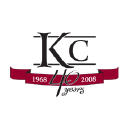What do they do?
Drive and control equipment to support agricultural activities such as tilling soil; planting, cultivating, and harvesting crops; feeding and herding livestock; or removing animal waste. May perform tasks such as crop baling or hay bucking. May operate stationary equipment to perform post-harvest tasks such as husking, shelling, threshing, and ginning.
Also known as:
Baler Operator, Combine Operator, Custom Harvester, Cutter Operator, Equipment Operator, Farm Equipment Operator, Hay Baler, Hay Stacker Operator, Loader Operator, Machine Operator, Packing Tractor Machine Operator, Picker, Rake Operator, Sprayer, Windrower Operator
-
1.9%
Change
Ranks #40 in job growth rate230Job Openings
Ranks #27 in net job growth
Looking for colleges that offer a specific major? Use the College Match Tool to find your best-matched schools and discover your estimated Net Price!
- Less than high school diploma (47%)
- High school diploma equivalent (29%)
- Some college, no degree (11%)
- Bachelor's degree (7%)
- Associate's degree (4%)
- Master's degree (1%)
- Doctorate or Professional Degree (<1%)
People in this career often have talent in:
- Control Precision - The ability to quickly and repeatedly adjust the controls of a machine or a vehicle to exact positions.
- Multilimb Coordination - The ability to coordinate two or more limbs (for example, two arms, two legs, or one leg and one arm) while sitting, standing, or lying down. It does not involve performing the activities while the whole body is in motion.
- Near Vision - The ability to see details at close range (within a few feet of the observer).
- Problem Sensitivity - The ability to tell when something is wrong or is likely to go wrong. It does not involve solving the problem, only recognizing that there is a problem.
- Far Vision - The ability to see details at a distance.
- Depth Perception - The ability to judge which of several objects is closer or farther away from you, or to judge the distance between you and an object.
People in this career often do these activities:
- Load agricultural or forestry products for shipment.
- Prepare materials or solutions for animal or plant use.
- Apply chemical solutions to plants to protect against disease or insects or to enhance growth.
- Inspect equipment or facilities to determine condition or maintenance needs.
- Operate farming equipment.
- Load materials into equipment for processing.
- Direct activities of agricultural, forestry, or fishery employees.
- Maintain forestry, hunting, or agricultural equipment.
- Confer with managers to make operational decisions.
- Measure physical characteristics of forestry or agricultural products.
- Record agricultural or forestry inventory data.
- Plant crops, trees, or other plants.
- Operate conveyors or other industrial material moving equipment.
- Attach equipment extensions or accessories.
- Operate irrigation systems.
This page includes data from:

 Occupation statistics: USDOL U.S. Bureau of Labor Statistics Occupational Employment Statistics
Occupation statistics: USDOL U.S. Bureau of Labor Statistics Occupational Employment Statistics
 Videos: CareerOneStop, USDOL/ETA and the Minnesota Department of Employment & Economic Development
Videos: CareerOneStop, USDOL/ETA and the Minnesota Department of Employment & Economic Development

















